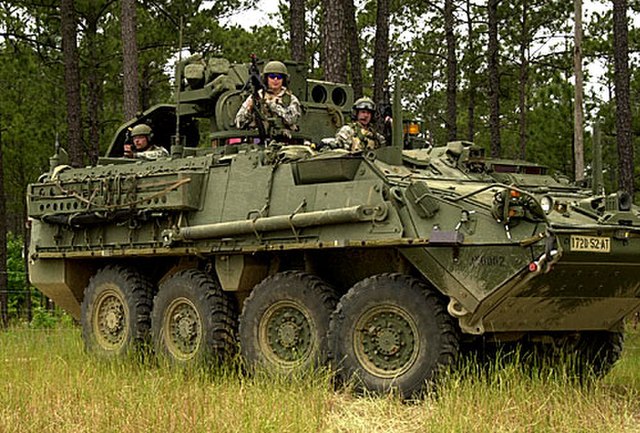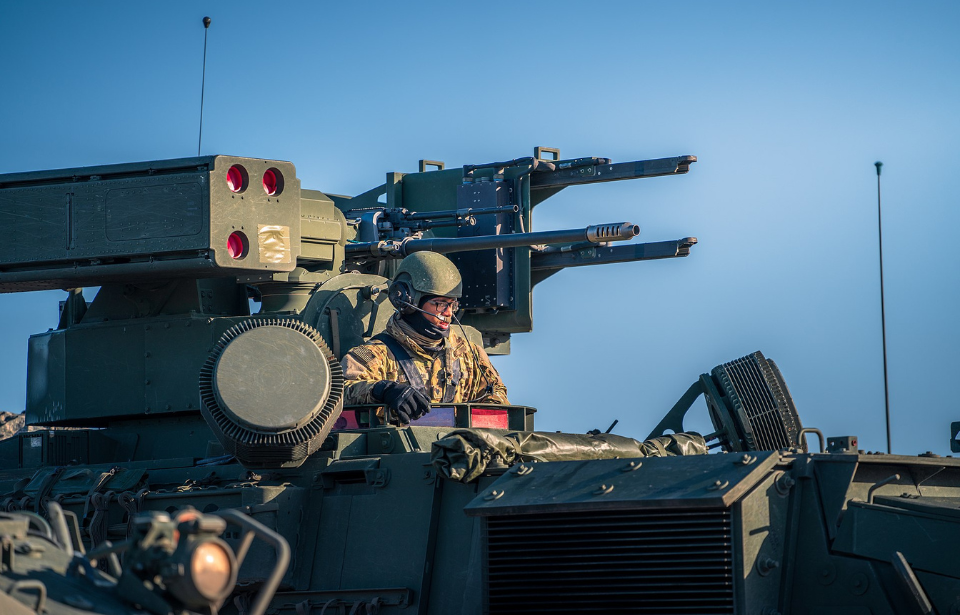Lasers, a technology that’s been the focus of sci-fi gadgetry for years, should soon be making their way into the hands of US Army troops in the field, at least according to the now-former Vice Chief of the Army Gen. Joseph Martin. The service is looking toward these powerful weapons to give soldiers improved protection against incoming explosives and other airborne threats, in particular drones.
The need for this technology was demonstrated firsthand to Martin, who witnessed Islamic State members equip commercial drones with explosives and munitions for use against the Iraqi troops he was training. These ad hoc tools were terrifyingly lethal and difficult to counter, with Martin saying, “ISIS took off-the-shelf [unmanned aerial systems], weaponized them, and used them very effectively against the Iraqis. And so we had to come up with some solutions. And we did.”
Another major motivator is the rapid pace of development of military technologies in nations like Russia and China, which may outpace the United States if they don’t continue to keep up in this technology race.
Last weapons are more effective than conventional ones

The solution for the US Army was lasers, which, when employed properly, are effective at stopping fast-moving airborne threats. When stopping an incoming projectile, a laser weapon operates like a long-range blowtorch, quickly heating the target until it’s destroyed.
One of the reasons they’re so effective is speed. Laser weapons travel at the speed of light, enabling them to engage and reach a target much quicker than any form of conventional weaponry. A typical defensive weapon, such as a missile, must be targeted launched, reach its target and then detonate, hopefully destroying the incoming threat. In comparison, a laser will reach its target instantaneously, allowing the operator to quickly know if they managed a direct hit.
However, lasers need a large power supply, which currently limits the more powerful systems to being mounted on large vehicles, at a minimum. In this case, a laser system offers many logistical advantages, too, according to Craig Robin, the head of the US Army’s laser project.
“Think about a missile: I have got to make the missile, I have to maintain it, I have got to carry it to the battlefield. I have got to store it, and if I don’t use it, I have got to decommission it,” he explains. “That laser system – we need gasoline and we need spare parts for our system, right? That’s the entire logistics burden.”
Robin also explains that for an engagement with a 50-kilowatt laser, it will simply use a few cups of fuel, while a conventional weapon, such as the FIM-92 Stinger, can cost $38,000 per unit.
The DE M-SHORAD Laser System
The Rapid Capabilities and Critical Technologies Office (RCCTO) was tasked by the US Army to implement laser technology into a usable weapons system. In response, they developed the DE M-SHORAD. The base vehicle is the Stryker A1, an eight-wheeled armored fighting vehicle. When operating as the DE M-SHORAD, it’s equipped with a 50-kilowatt laser.
In a training situation, a DE M-SHORAD located and tracked a drone eight kilometers away. After locking onto and tracking the unmanned aerial vehicle (UAV), the system detected a sudden incoming mortar round. Immediately prioritizing it, the DE M-SHORAD sent a laser beam at the round, destroying it. A few seconds later, the laser returned to the drone, destroying that, too.
More from us: The Oldest Military Tanks Still In Service
“We’ve got a target acquisition system that can sense and lock on and then strike a moving mortar round … an unmanned aerial system and other aircraft with energy sufficient to the point that it will penetrate and disrupt that particular munition or platform’s ability to accomplish its mission,” said Martin. “That’s an incredible power to have.”
Martin adds, “It’s very promising. It’s very powerful. There (are) many things we’ve got to do in terms of testing, and it’s about to go through a shootout to see how it does. But I can’t wait … to see what they can do with it.”
